The Cinema City mural, an all time favorite, for this week.

שבת שלום
Jerusalem, Israel – what is really happening
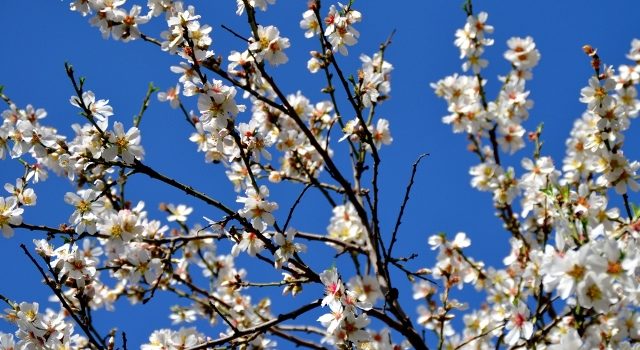
The first thing to know is that amygdalus communis is the scientific name for the almond tree. With Tu B’Shvat, the song of “almond trees bursting out” (or flowering) can be heard throughout Israel in school classrooms sung by small children wearing floral wreaths on their heads.
Every year when I review and remember past celebrations of Tu B’Shevat, I stress over how to spell ט”ו בשבט in English. I have found 8 options and already used two here.
Every year I want to bring to you something new and interesting.
Dried fruit and nuts fill the stores and markets as every year.
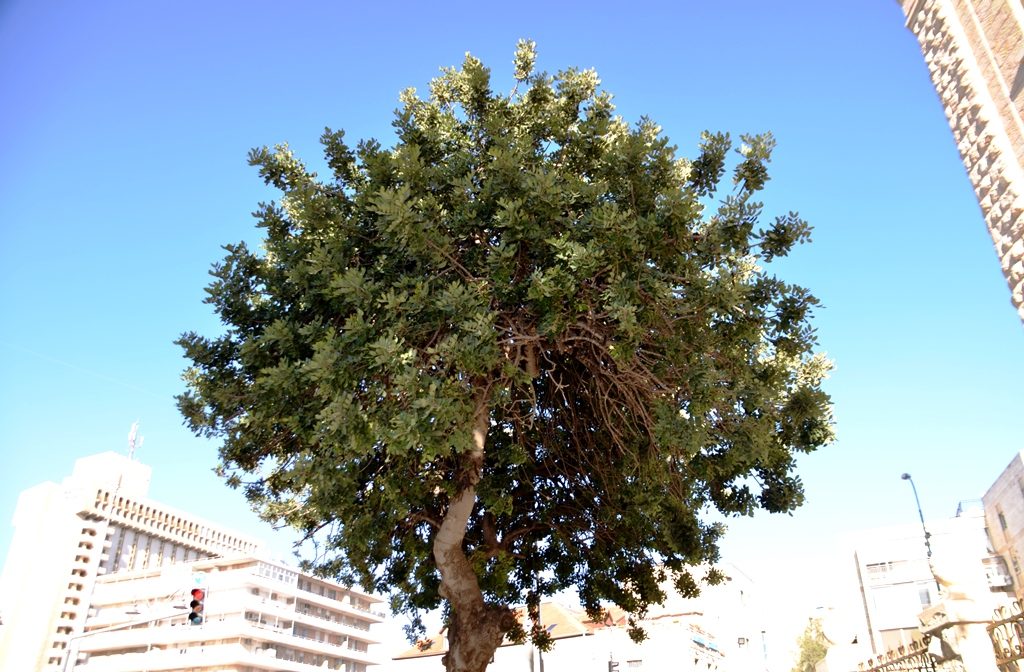
Carob trees tower over many Jerusalem, Israel streets. This tree is near the Prime Minister’s Residence. I wonder how many of the thousands protesting there noticed it?
For those of us who grew up in the US, Tu B’Shvat meant getting a piece of dark brown, dried out bokser.
Hard to chew and unattractive, why would anyone want to eat it to celebrate the holiday?
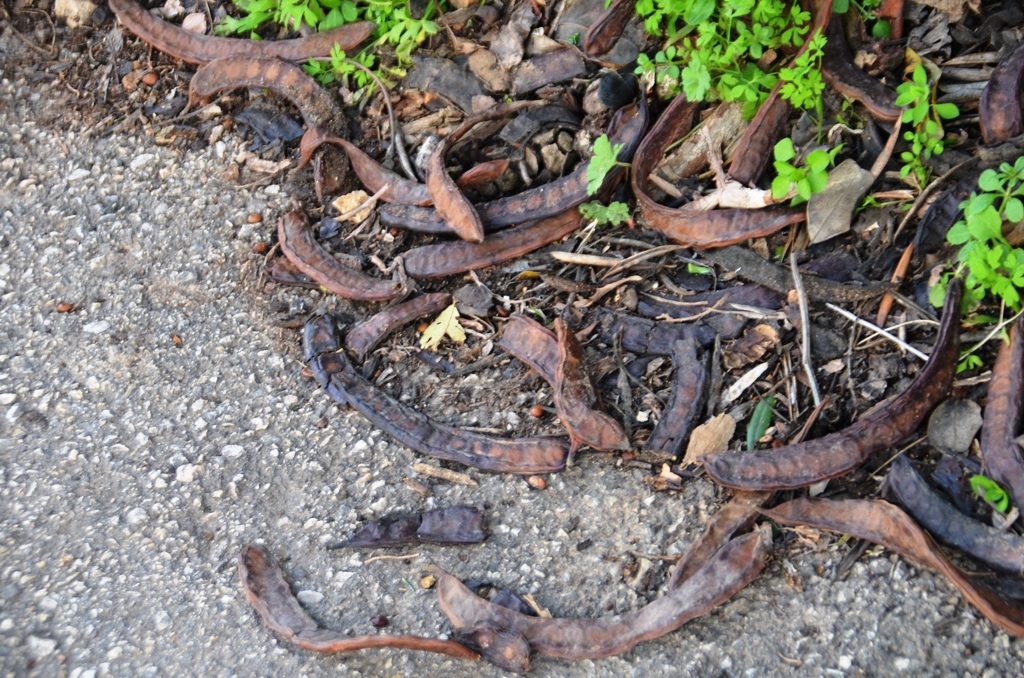
Along Jerusalem streets in time for Tu B’Shvat, there are piles of dried pods fallen from the trees, with new growth peaking its way through.
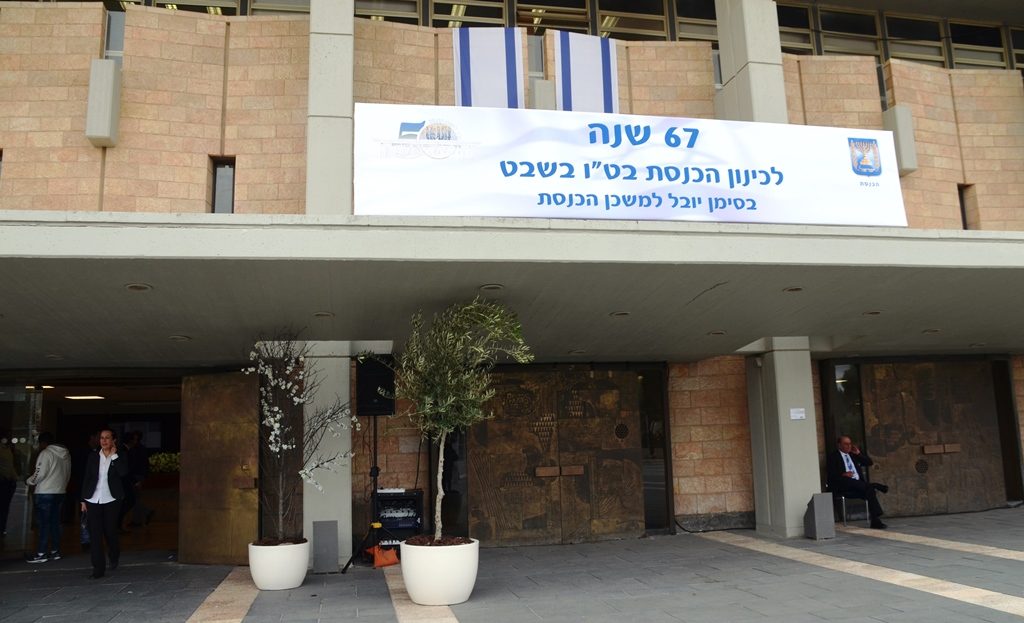
The Knesset opening and birthday are held on Tu B’Shvat. In honor of 50 years in its present location, in 2016 a major celebration was held.
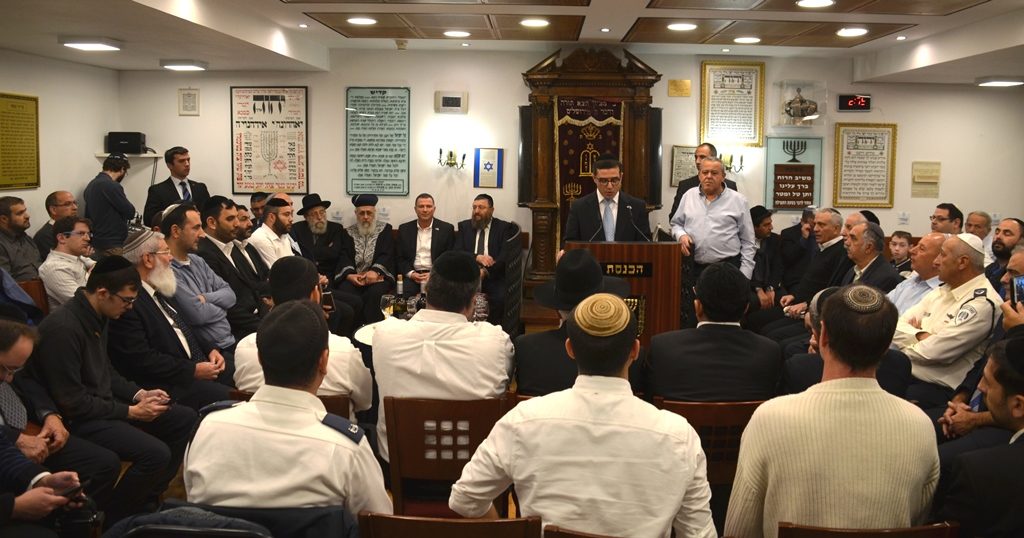
There was a special afternoon service in the old Knesset Synagogue followed by wine and fruit.
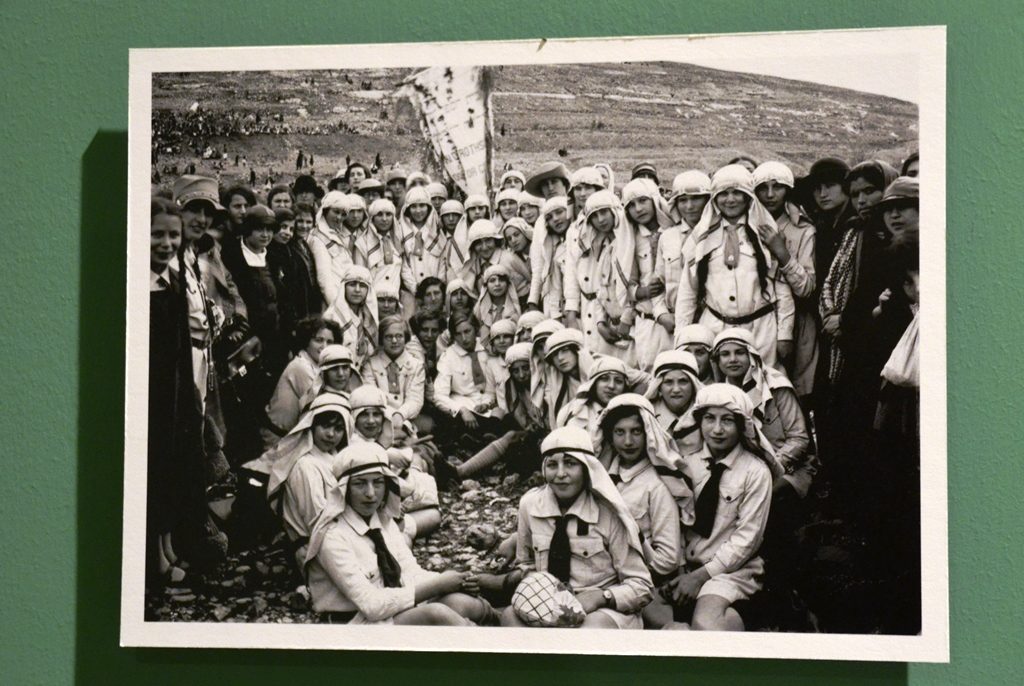
These Girl Guides were celebrating Tu B’Shvat in Jerusalem in 1928, on an outing in Beit Hakerem.
Since Biblical times almonds, amygdalus communis, have been a sign of spring, a sign of new life and God’s promise.
|
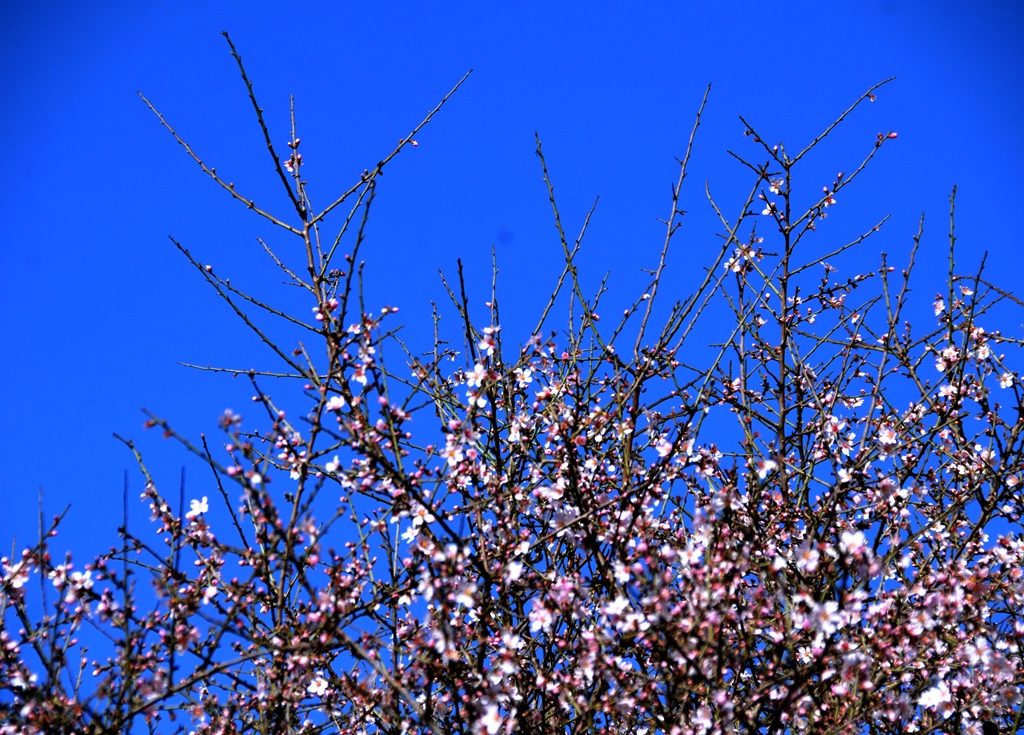
Almond, the first tree to flower before winter’s end, symbolized fast-moving events. “…the almond tree blossoms, the grasshopper drags itself along, and desire fails; because all must go to their eternal home…” -Ecclesiastes 12:5
Anyone interested in the nature and the environment of Israel, with the special emphasis given to the linkage between the plants and Jewish traditions and literature, will appreciate the Hebrew website Wildflowers of Israel.
In addition, their English pages have a wealth of information. Hours of dedicated work have gone into research and photography devoted to the study of wild plants of the Land of Israel, a point of interest for people all over the world since Biblical times. In spite of Israel’s small size it has 2,500 plant species. There are about 100 plants mentioned in the Bible, and about 400 mentioned in the Mishnah and the Talmud.
Thanks to Sara Gold, my contact whenever I need information on a flower or plant. (I know next to nothing about Israeli flora and fauna.) Who knew aloe plants flowered?
In honor of Tu B’Shvat – I searched for the almond – Amygdalus Communis.
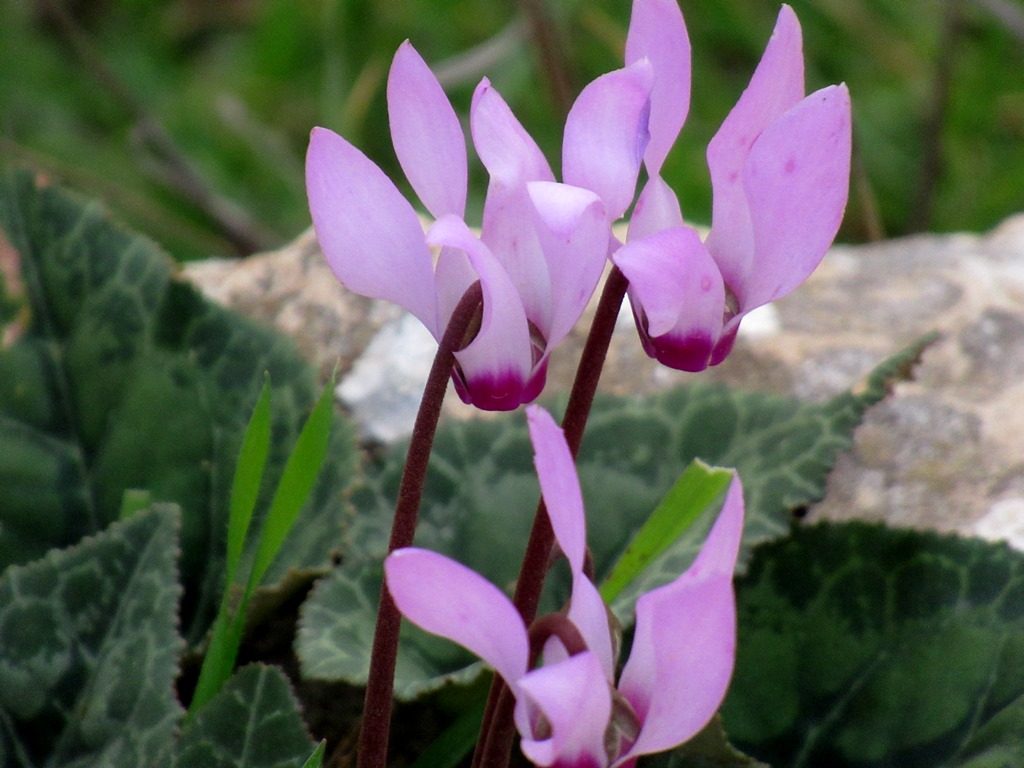
I searched in the Valley of Cross on the path to the Israel Museum, and there were no almonds bursting forth, but I did find these first flowers in bloom.
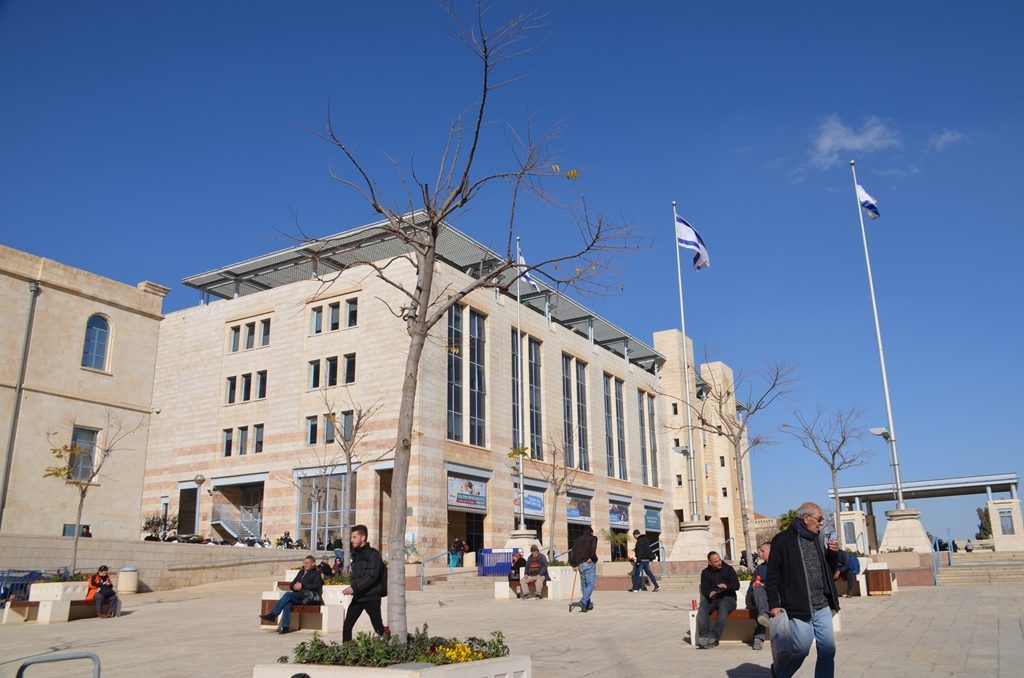
I went to see what new trees were planted in Kikar Safra, Safra Square.
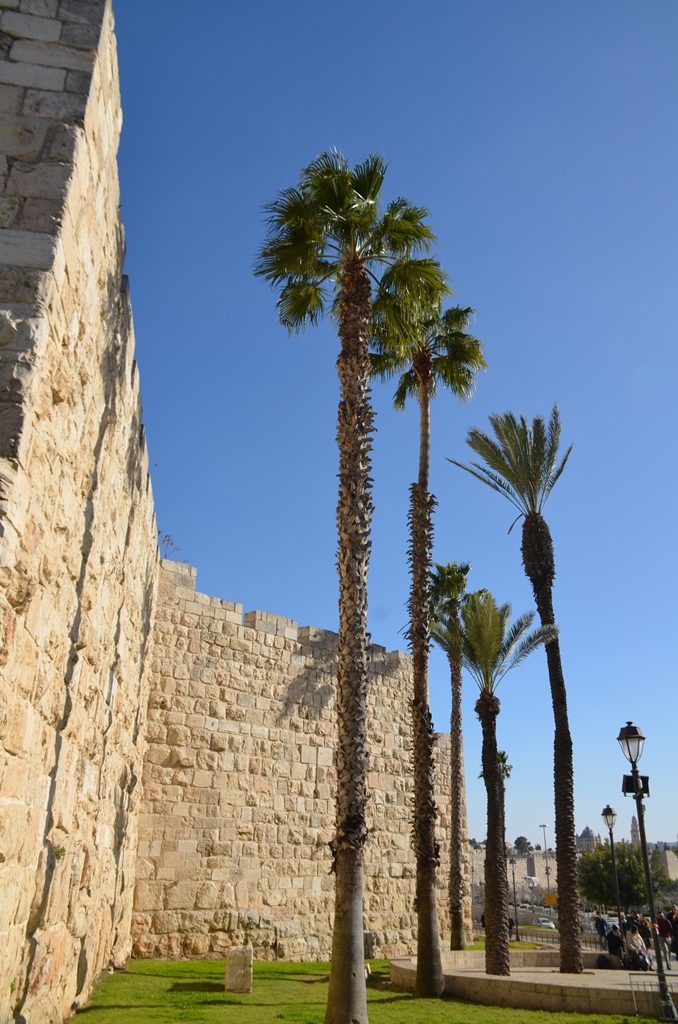
Thankfully some tall palm trees survived last year’s infestation and are standing tall.
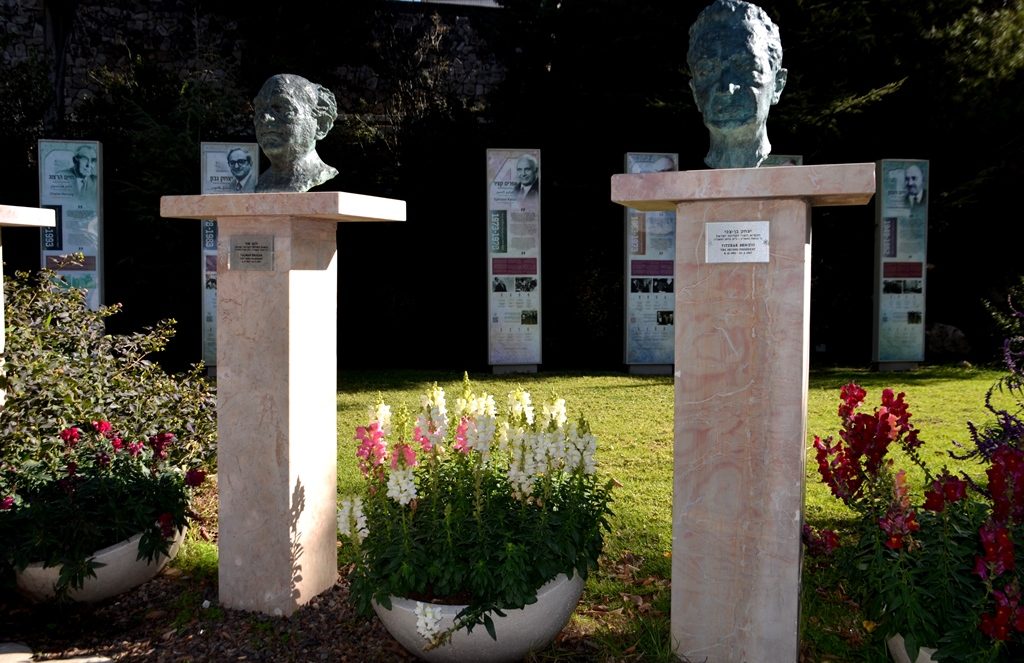
I searched the gardens at Beit Hanasi, the Israeli President’s residence, and there were no almonds bursting forth, but these new potted flowers were enjoying the morning sun.
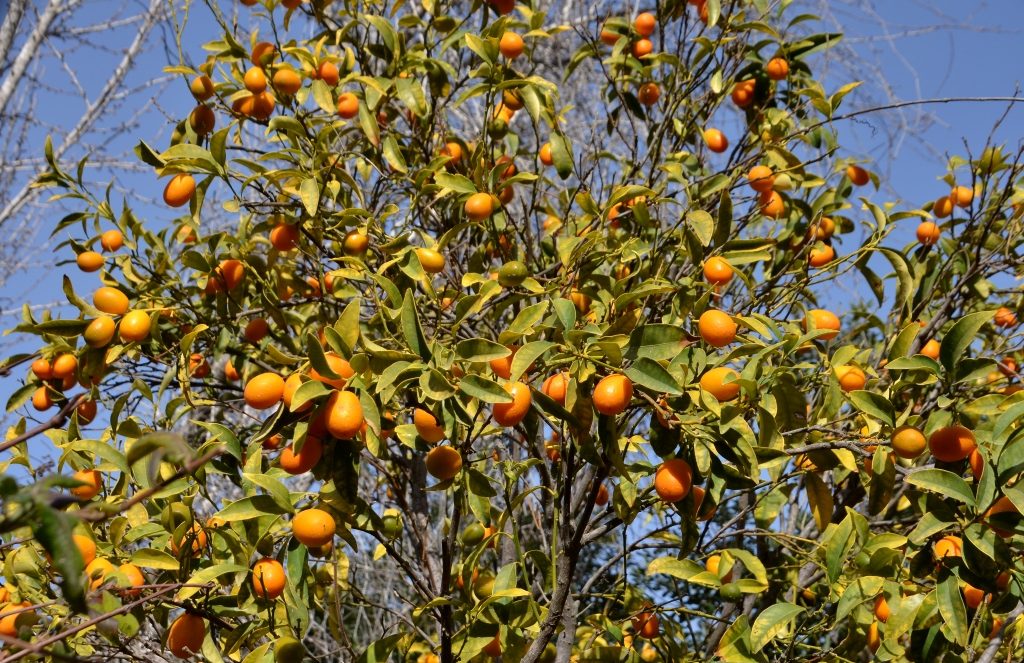
In the Beit Hanasi gardens there are 60 olive trees, a line of kumquat trees ripe with fruit, but not one almond tree.
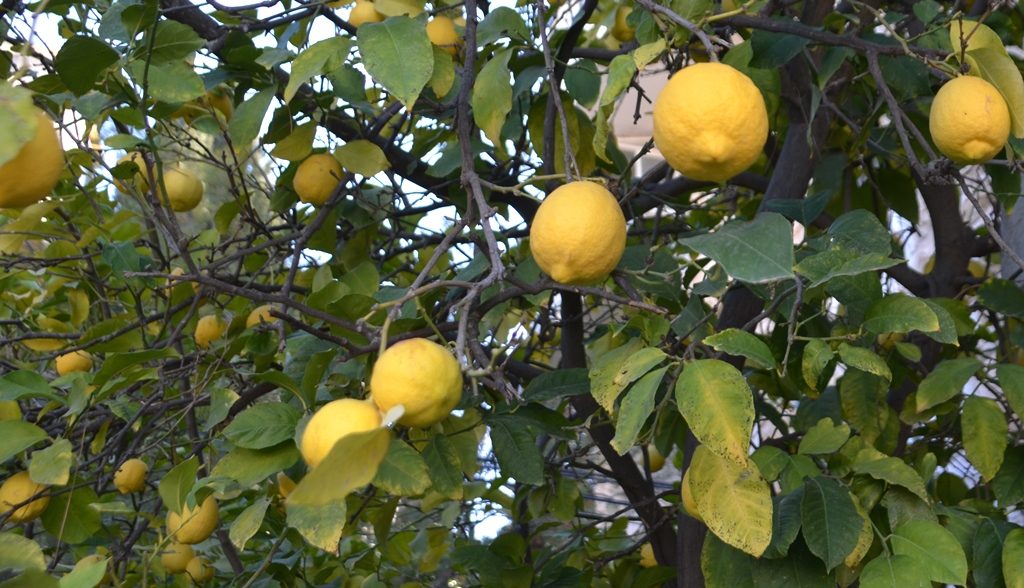
Our lemon tree is full of ripe fruit too. In my search this year, I found no almond blossoms in Jerusalem. It is still too early. They really do seem to burst out when they appear.
So it seems as of now, the best place to search and find those bursting Amygdalus Communis is Wildflowers of Israel – HERE.
Tu B’Shvat is to be celebrated beginning the night of January 20, and on January 21.
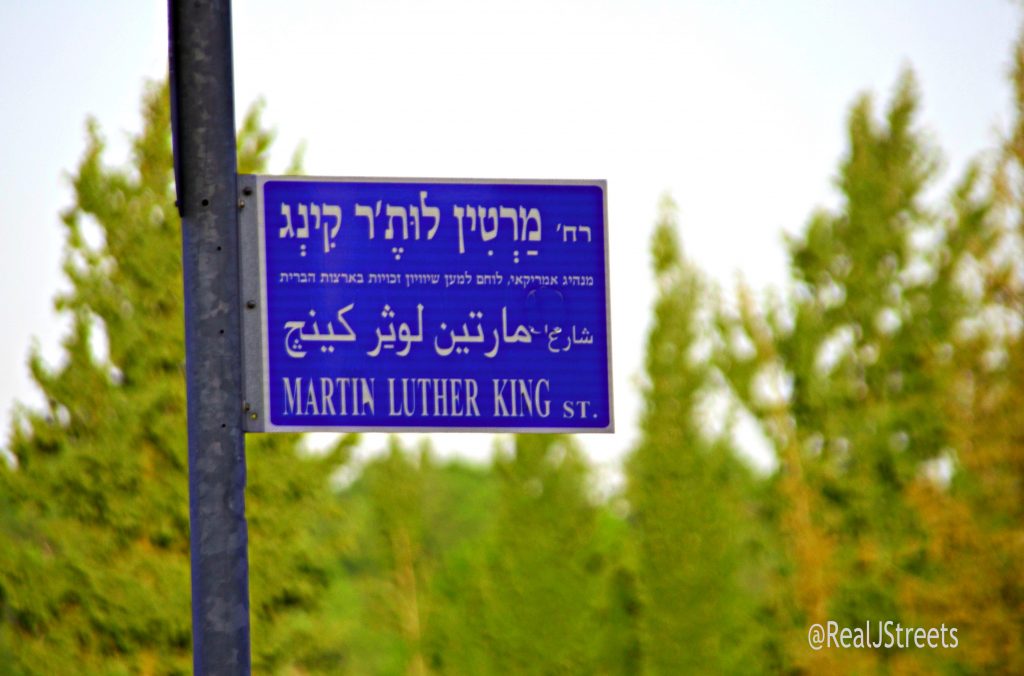
In honor of Martin Luther King Jr. Day, falling the same day this year, here is a new photo of the Jerusalem street sign with trees in distance.
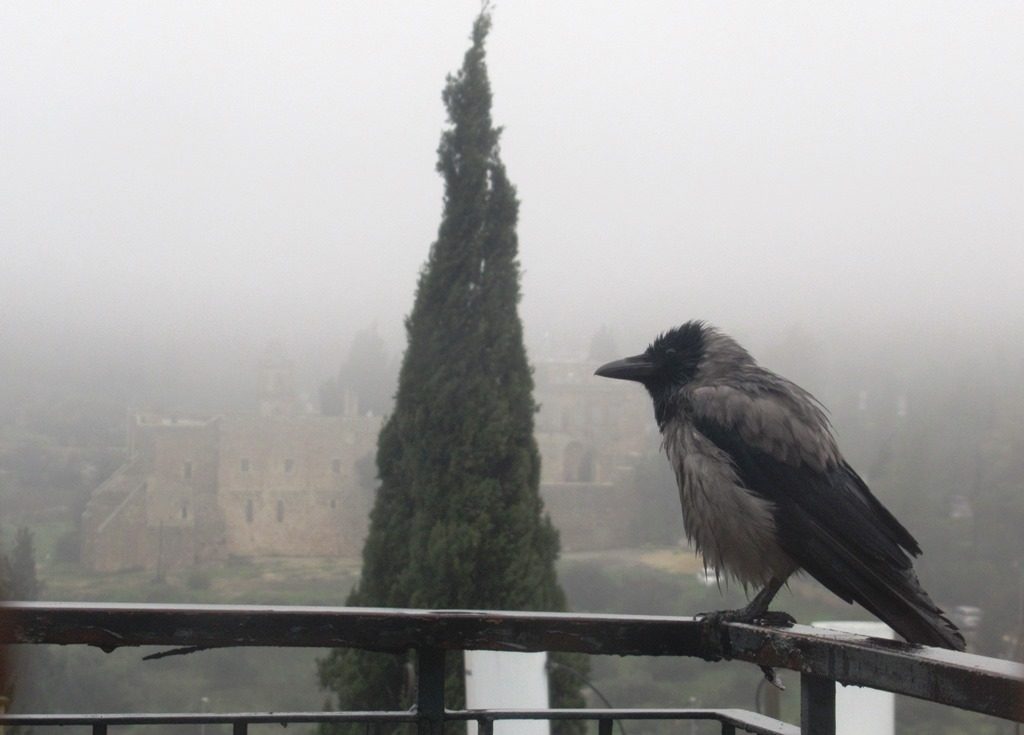
Snow is in the forecast for Jerusalem. Rain has started to fall. After sunny morning weather, this photo is again appropriate.
Jerusalem weather and politics are hard to predict. Both can change quickly.
UPDATE:
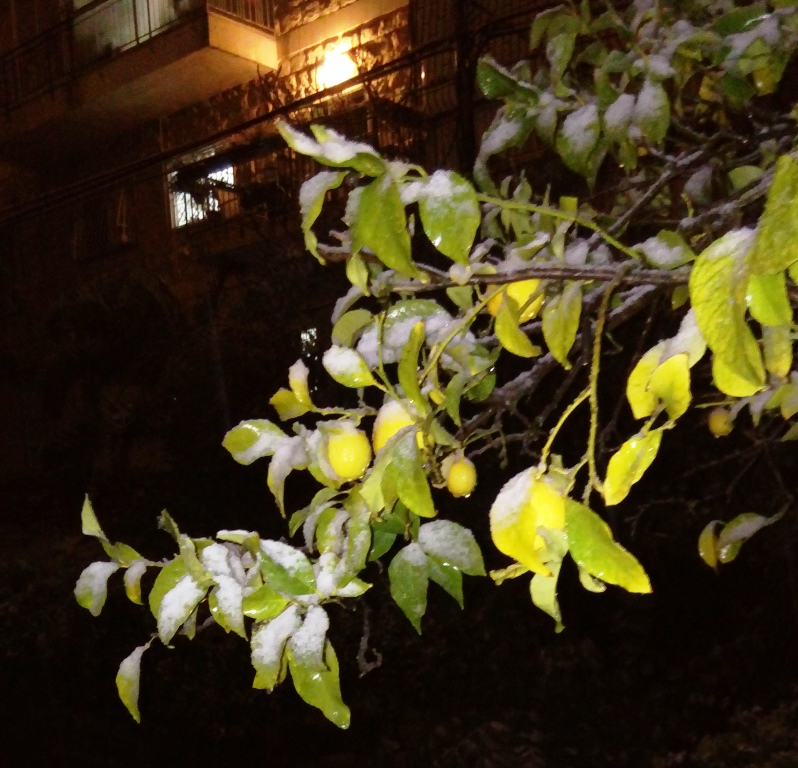
When snow started coming down, I grabbed phone and ran outside. This was best photo of predicted snow storm, to see real snow, back to 2015 HERE.
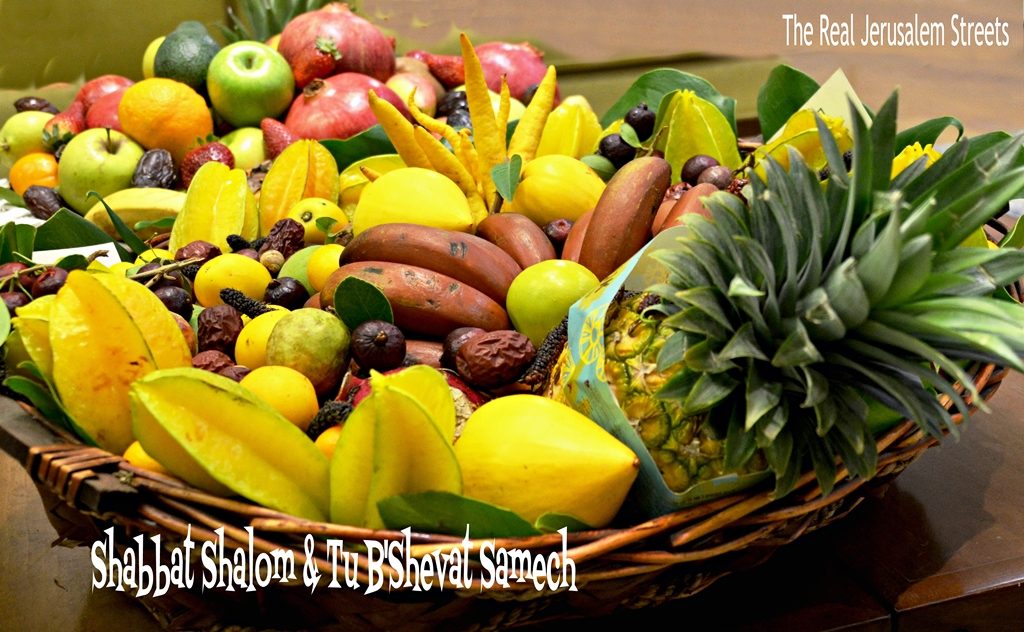
But greetings of a happy Tu B’Shvat and Shabbat Shalom, are good to be repeated every year.
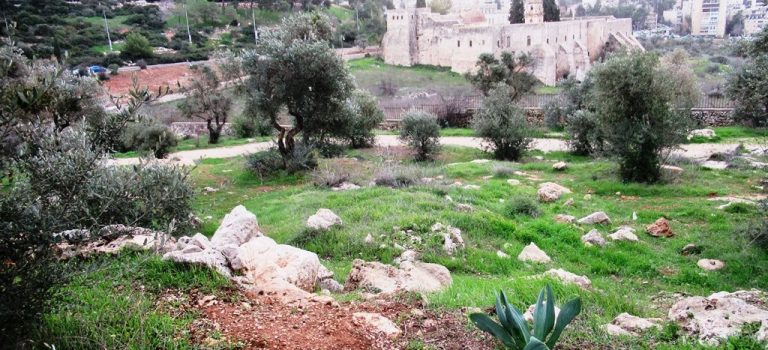
This time of year, in Jerusalem, Israel, with the beginning of the Hebrew month of Shevat and the approaching “New Year of Trees,” we anticipate new growth and spring.
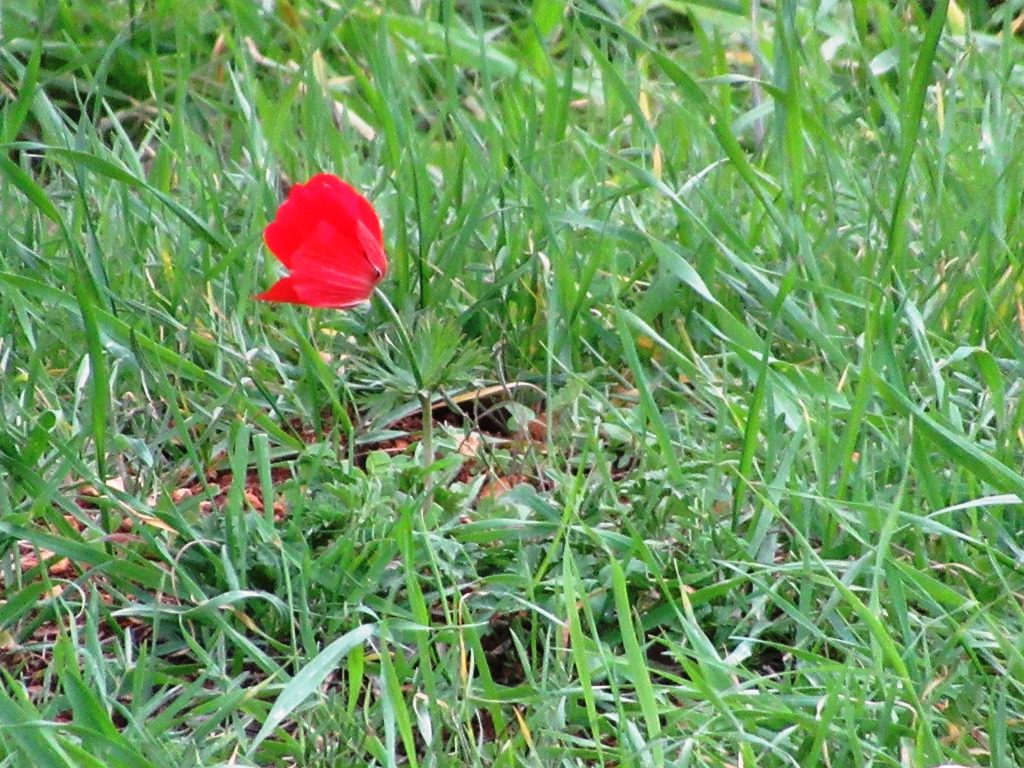
Walking yesterday toward the Knesset, I spotted the first wild flowers in bloom.
New paths are being prepared through the Valley of the Cross.
There are no blossoms on the almond trees yet, but new olive trees have been planted.
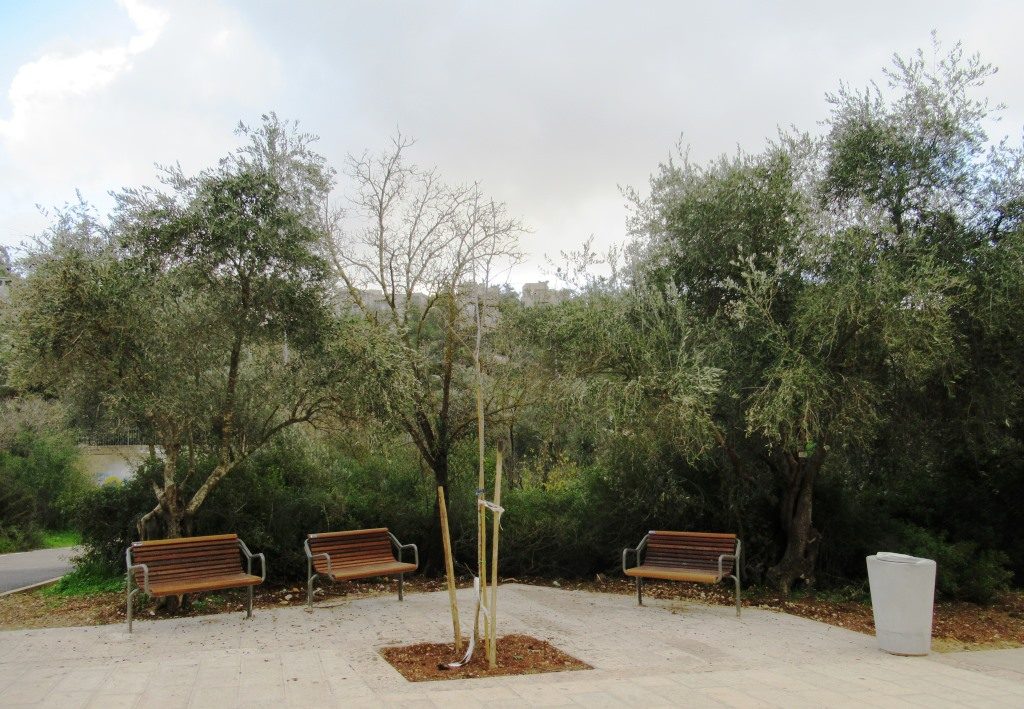
New benches have been placed along the new walking and bike path under development.
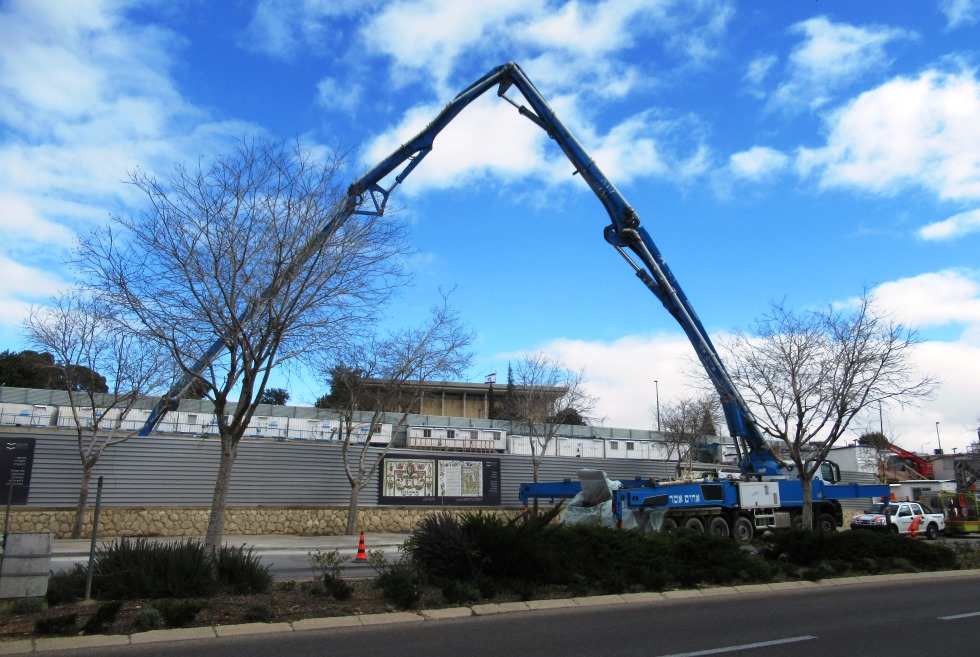
The Knesset rises beyond the construction site of the new National Library.

But then the weather turned from sunny to rainy and cold. Thanks to this bird who perched outside my window, I had something else to photograph other than the grey foggy sky.
People ask, “What is there to do when it is too nasty to be out on the Jerusalem streets?”
Here are three of the easiest answers to this often asked question:
The Bible Lands Museum Jerusalem – BLMJ
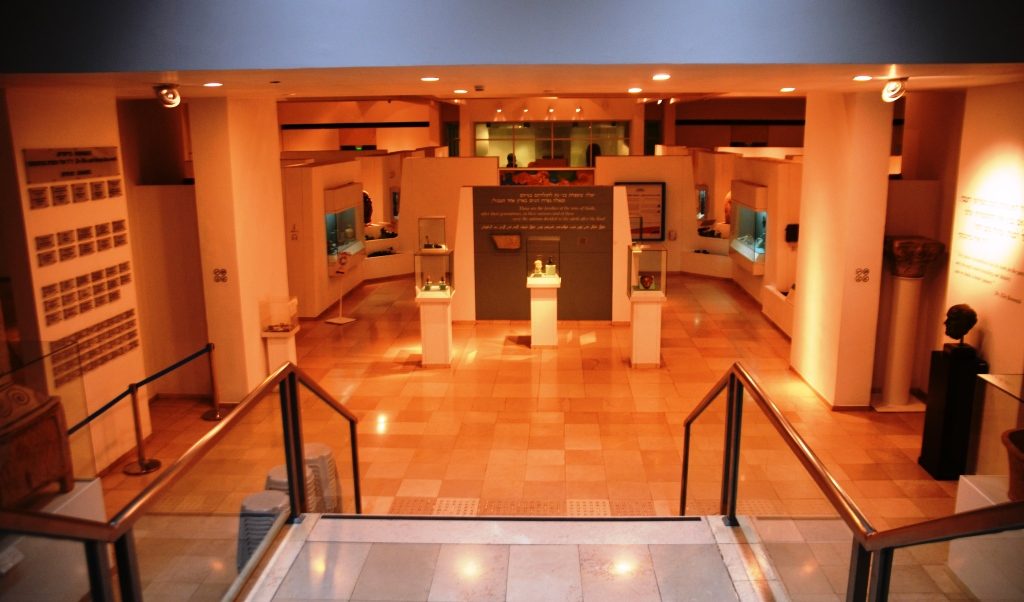
BLMJ main galleries take visitors back to the earliest civilizations.
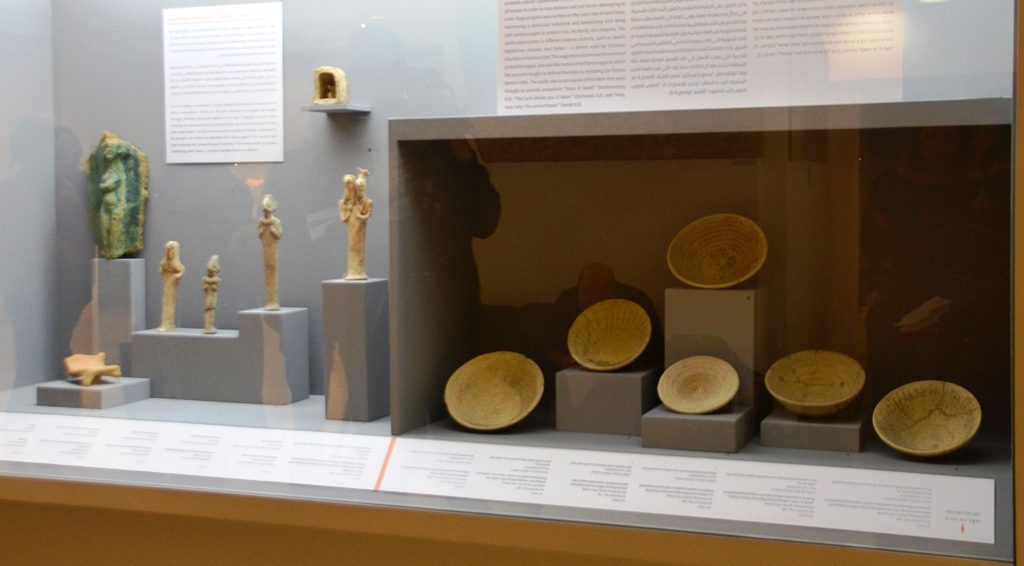
A new exhibit opened with pieces looted from archaeological sites in Judea and Samaria and recovered by the Israel Antiquities Authority.
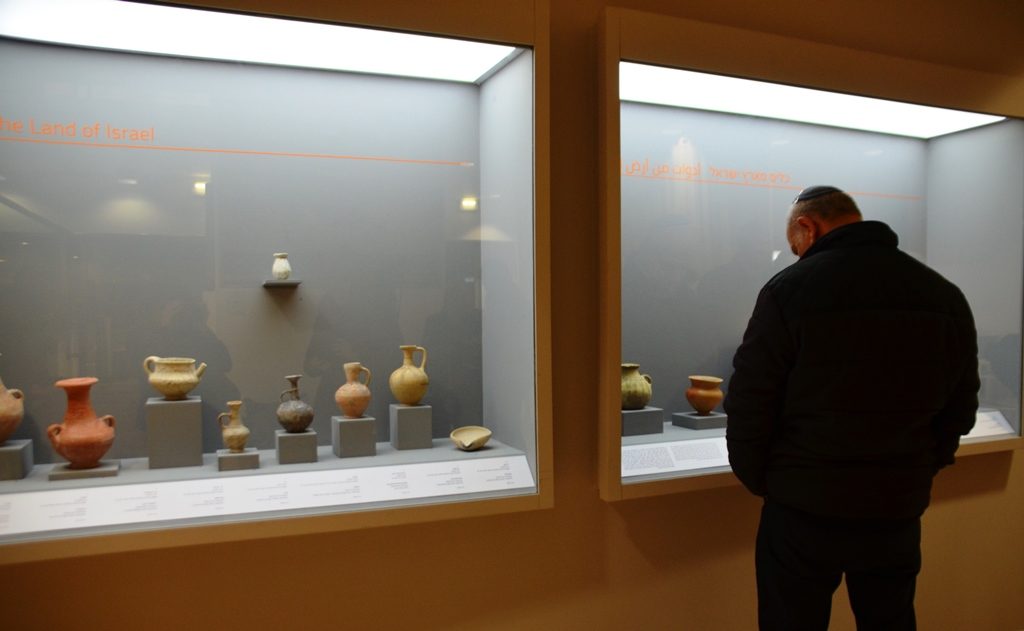
Each piece has a story, going back many centuries.
The Israel Museum
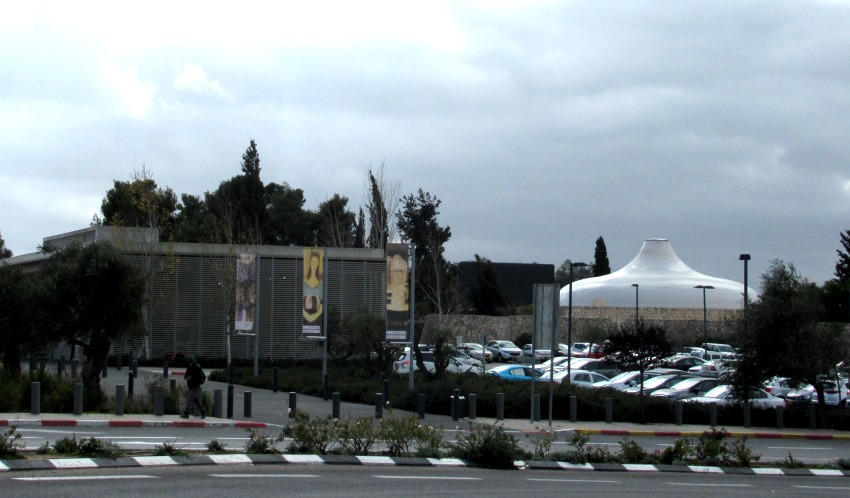
Across the road from BLMJ, one sees the dome of the Shrine of the Book, the home of Dead Sea Scrolls.
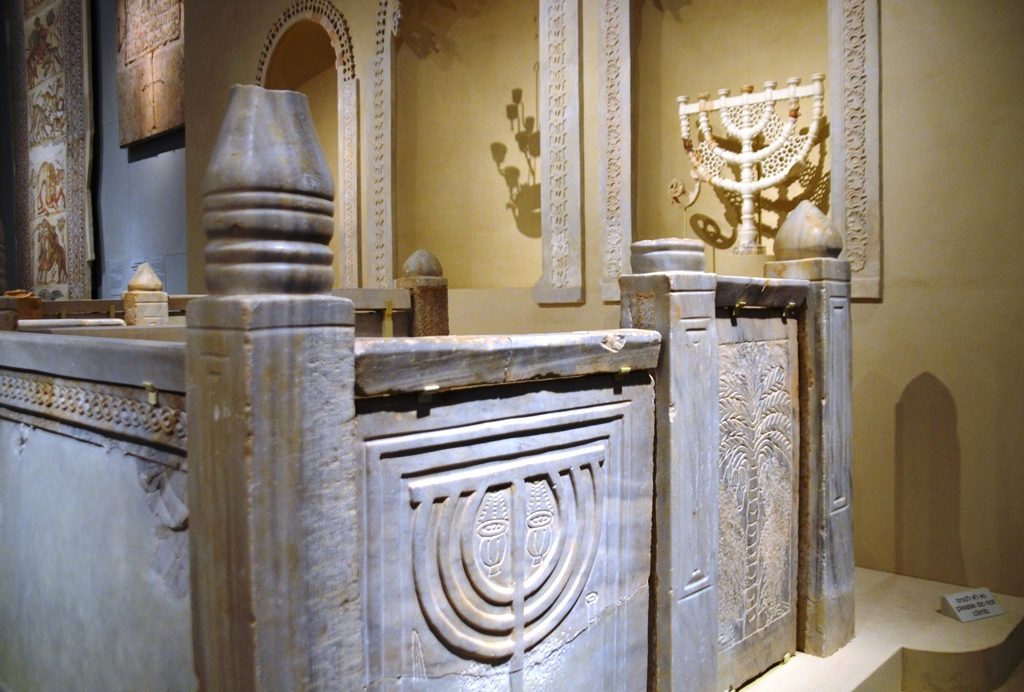
In the Israel Museum, the largest of Jerusalem’s dozens of museums, are collections of ancient Jewish life in the land of Israel.
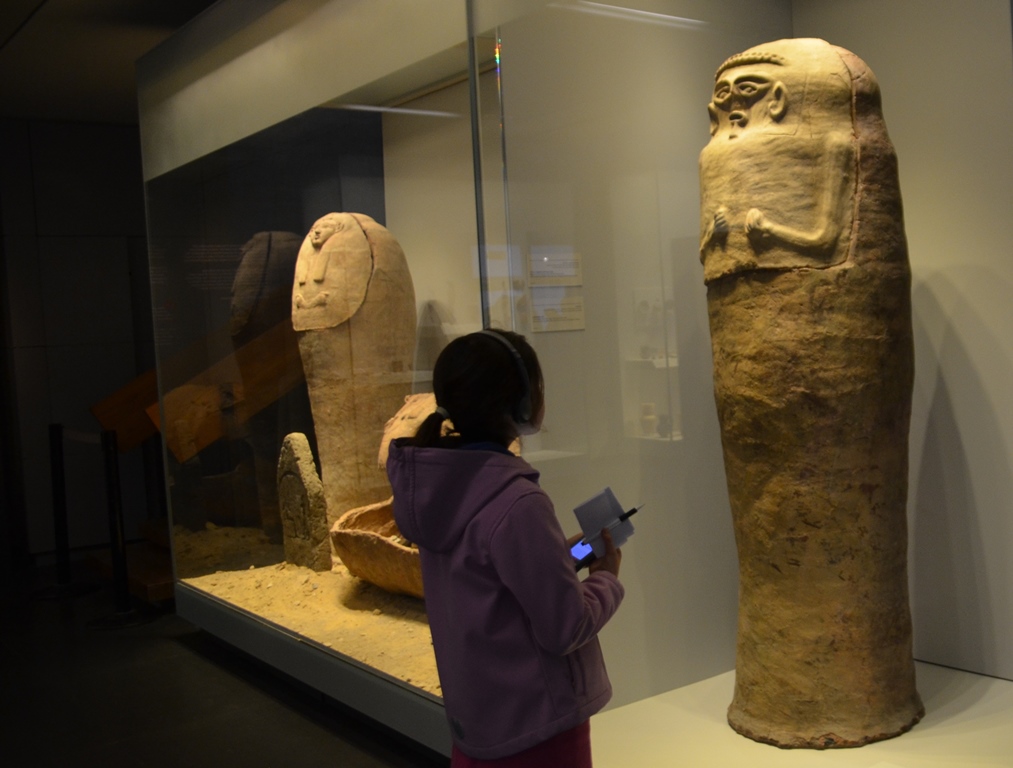
Learn about ancient Egyptian Mummies on a audio-guided tour with the latest modern technology.
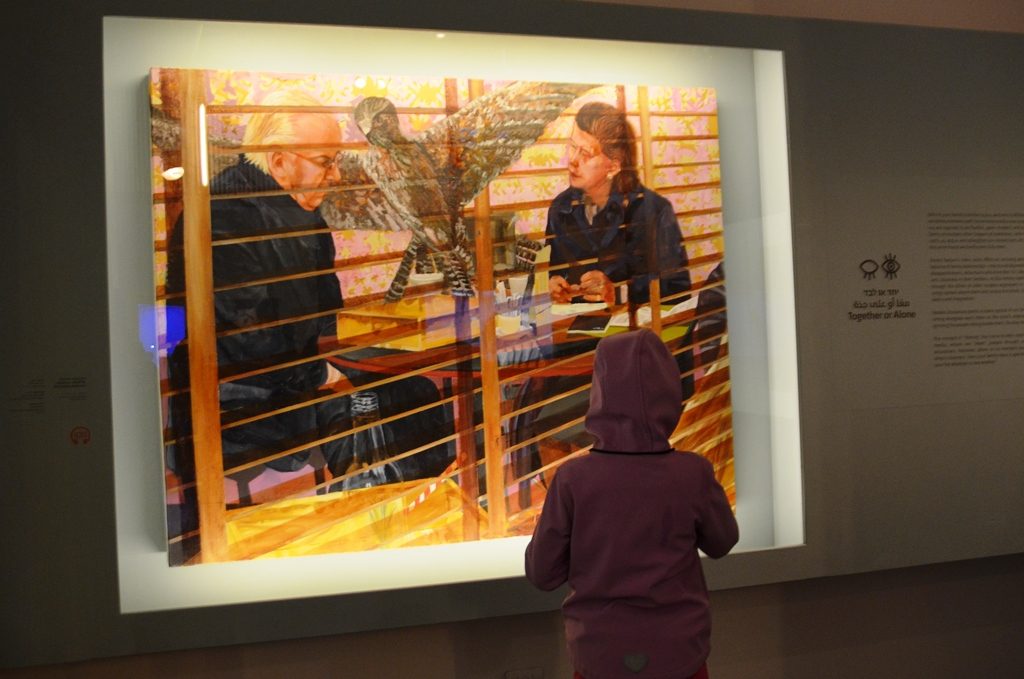
Of late, Jerusalem museums have taken a special interest in attracting and engaging children.
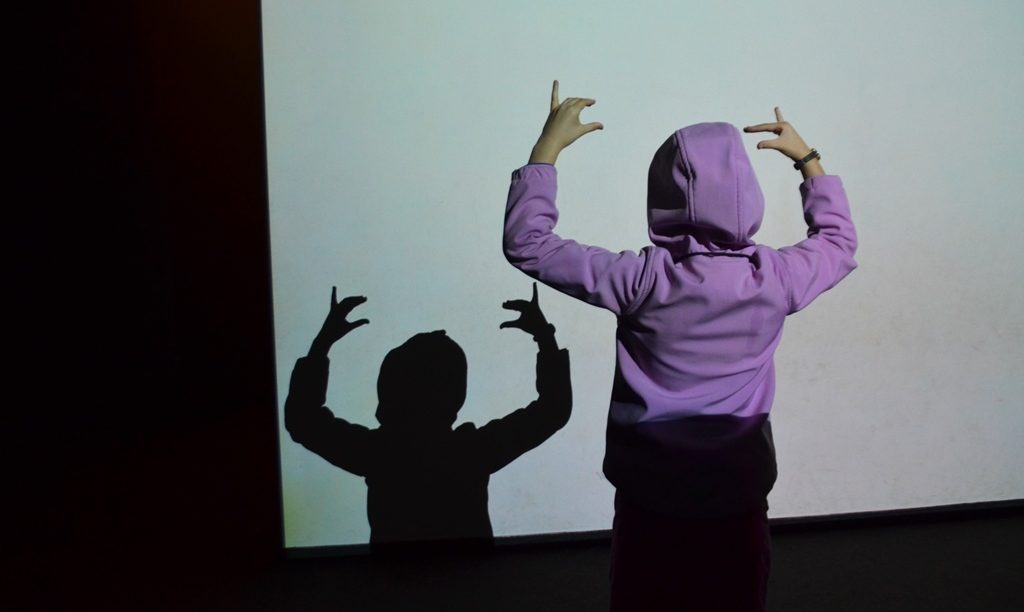
Multiple exhibits provide young people opportunities to explore and learn.
The Bloomfield Science Museum Jerusalem
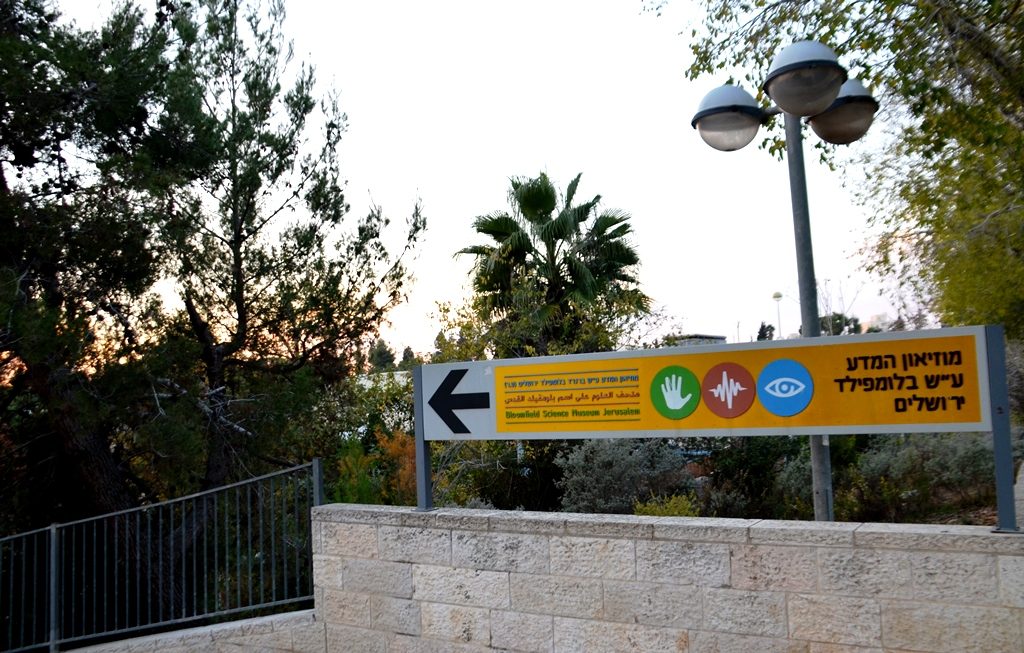
The science museum had special exhibits on fire for Hanukkah, which were very popular the last days when it was raining.
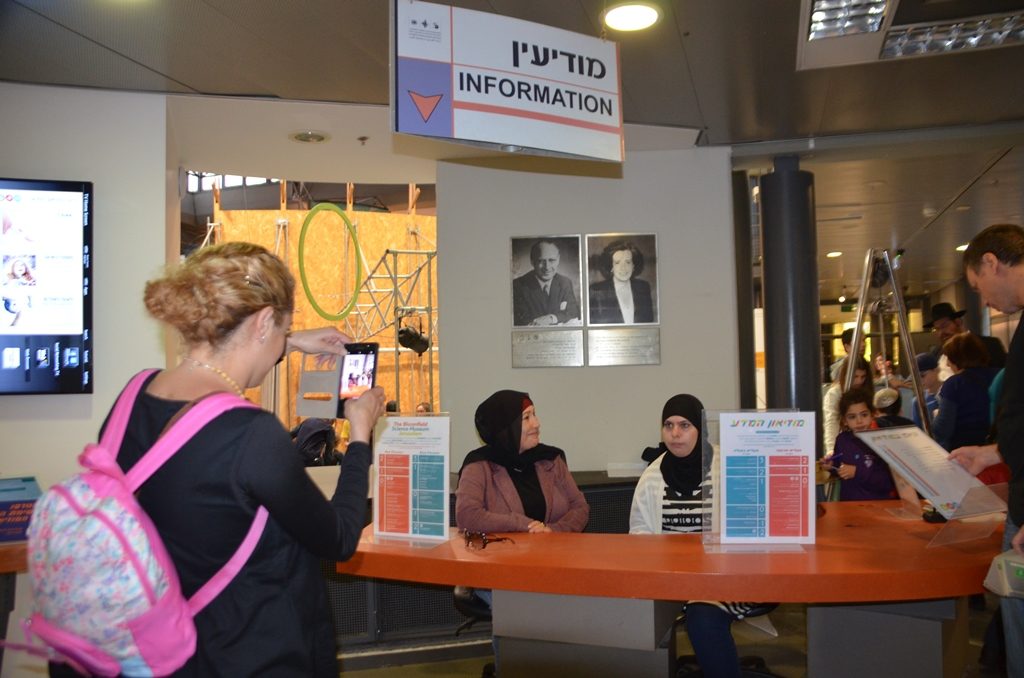
Check in with information when you enter.
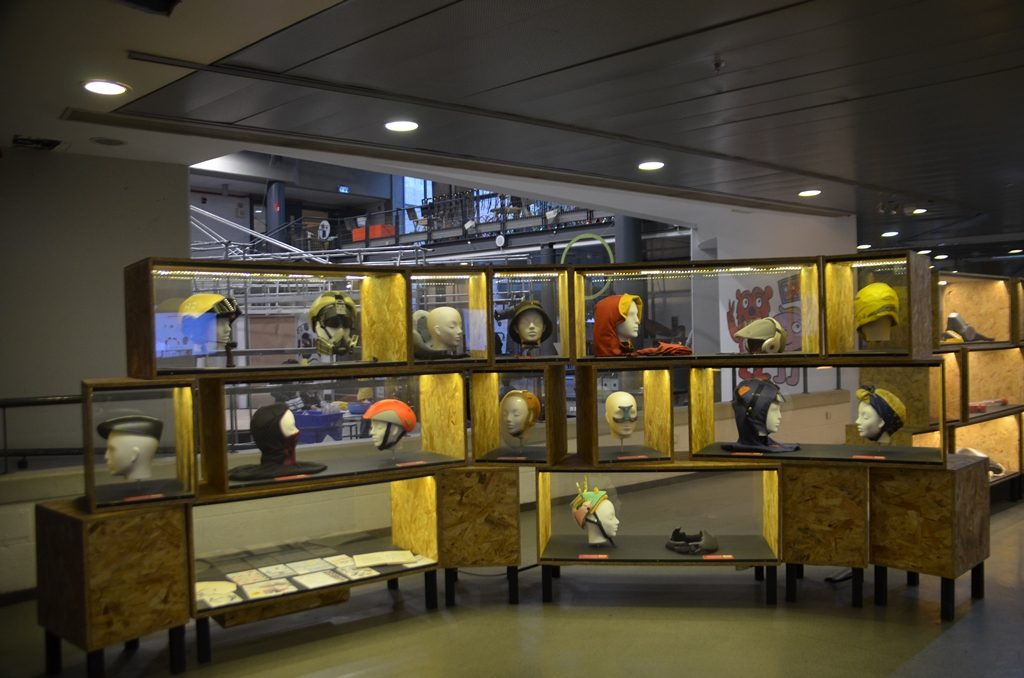
There are exhibits which are temporary
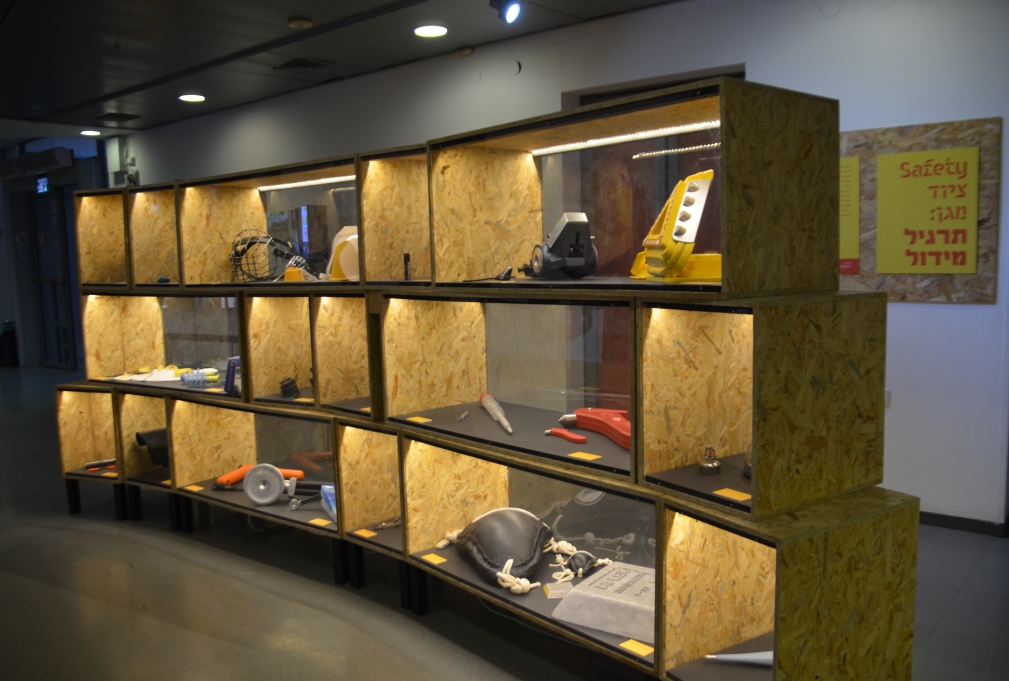
and are constantly changing to engage young minds.
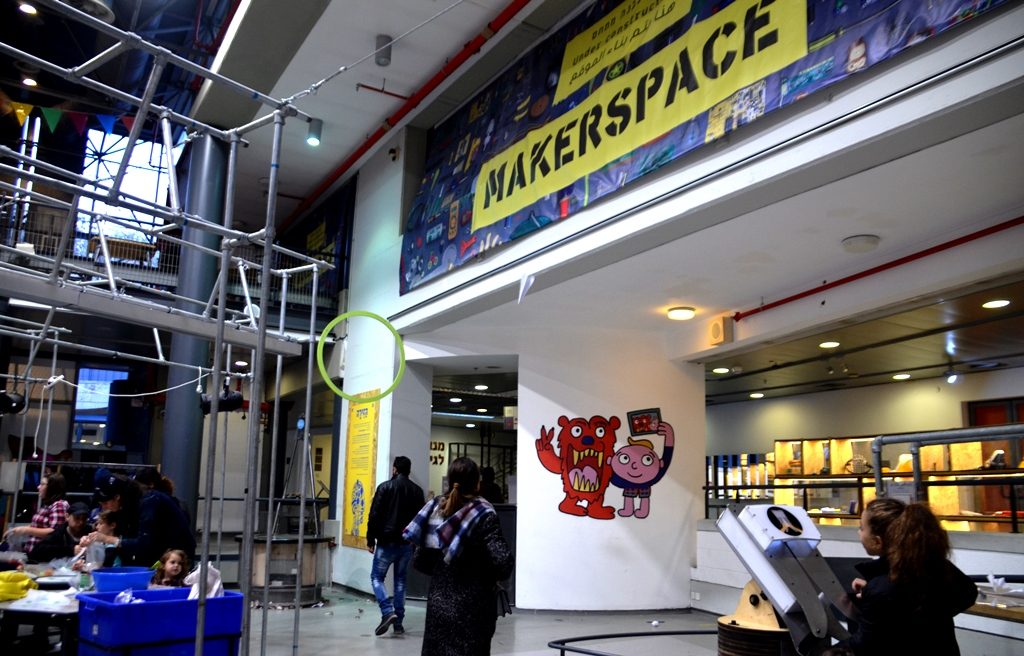
Makerspace was in the main hall on my last visit.
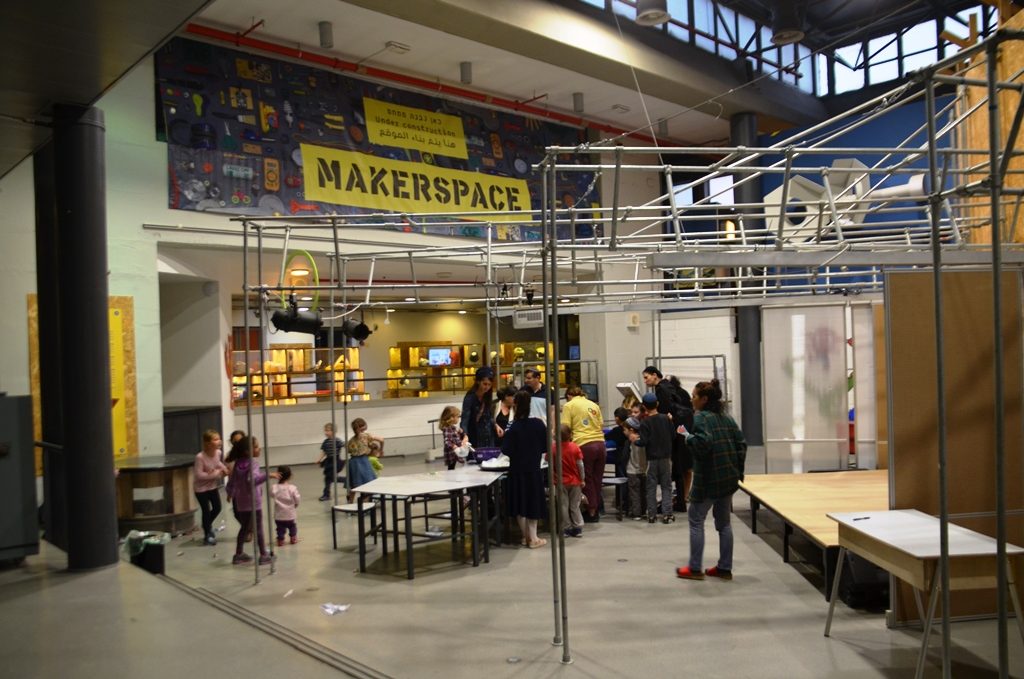
Young people were encouraged to design and fly their own paper airplanes.
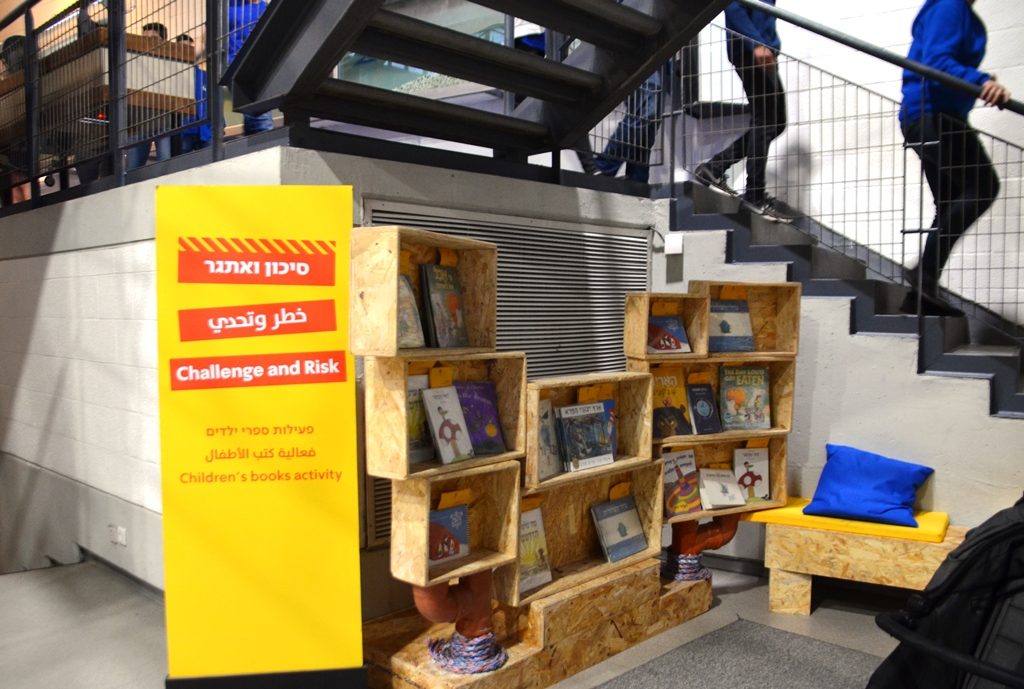
There was a reading section called Challenge and Risk.
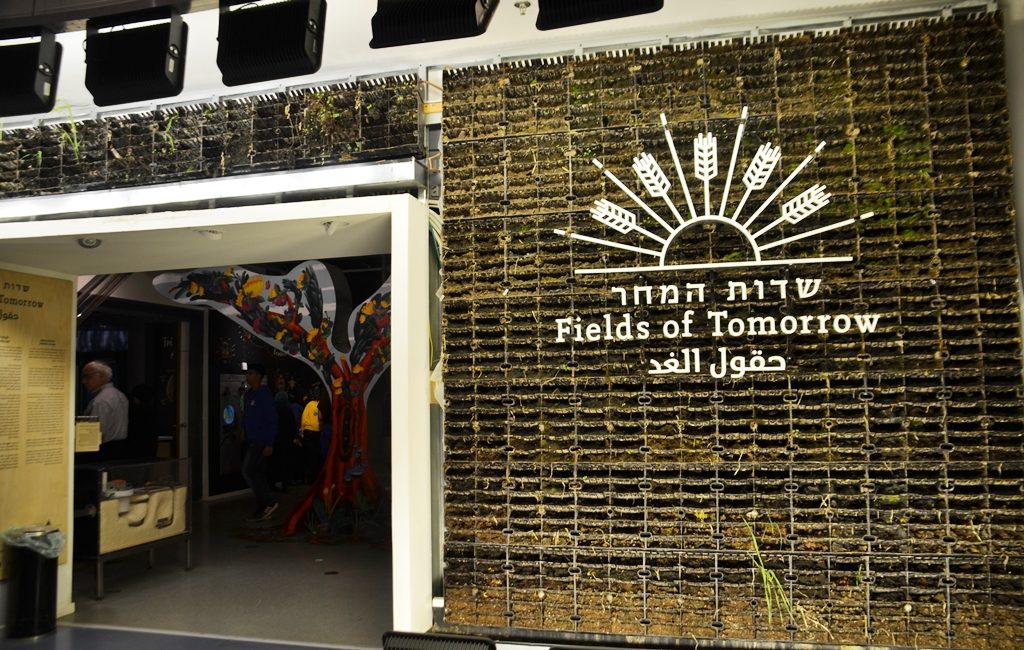
Notice that everything in these museums is in Hebrew, Arabic, and English.
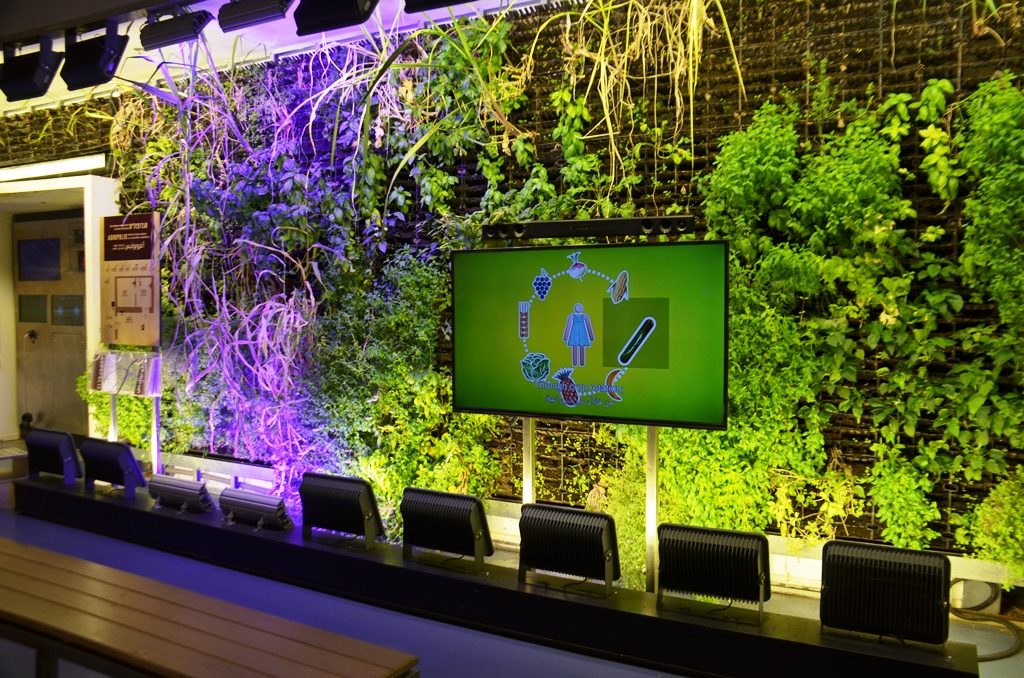
Colors and technology are used to attract visually,
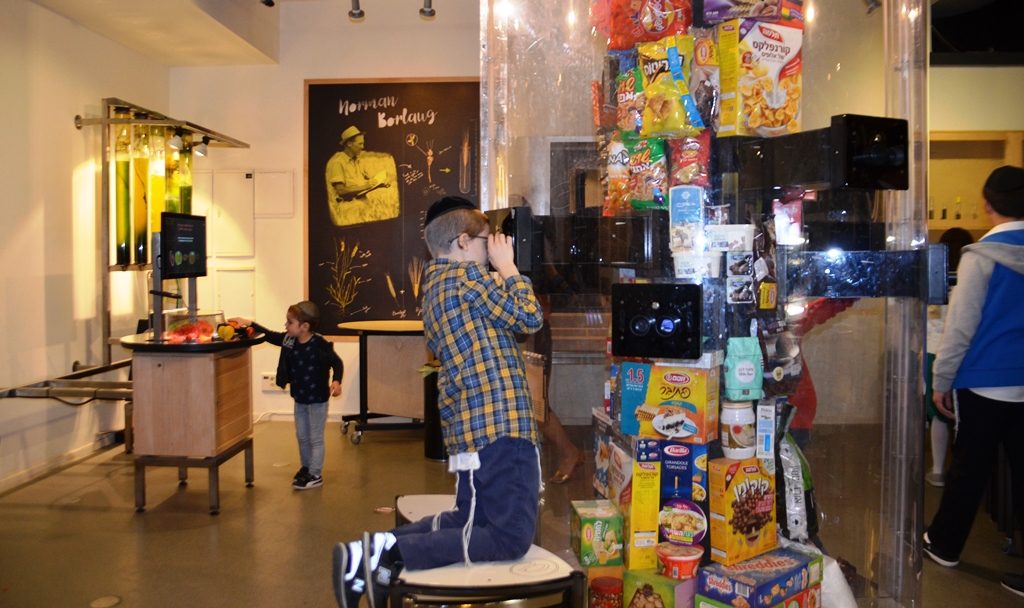
though sometimes simple things can be made interesting too.
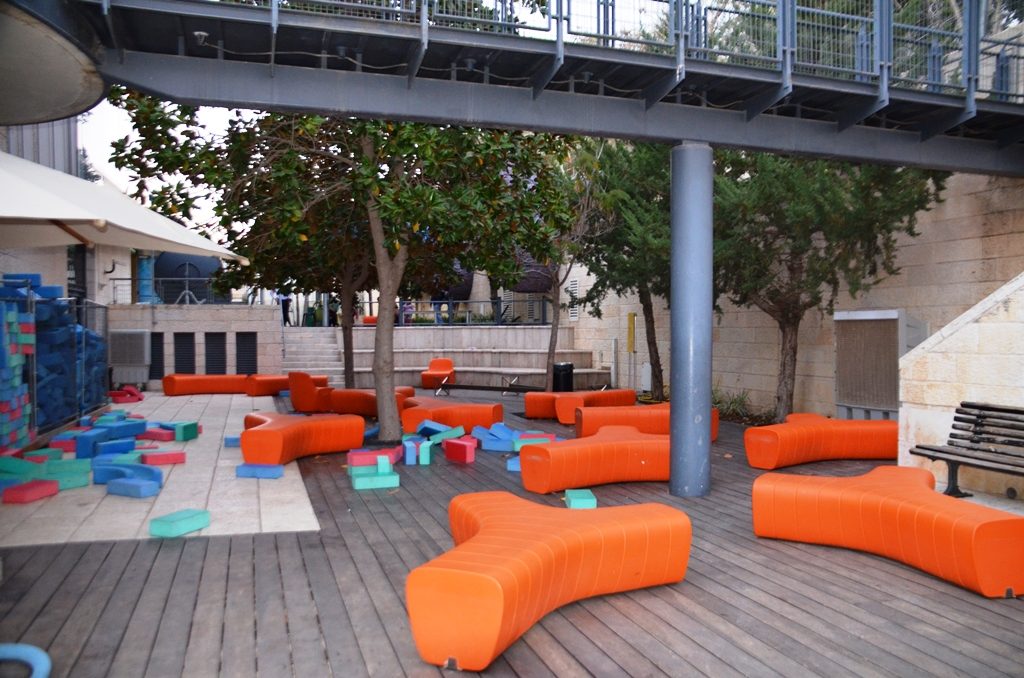
Outside areas are much more popular when the weather is pleasant.
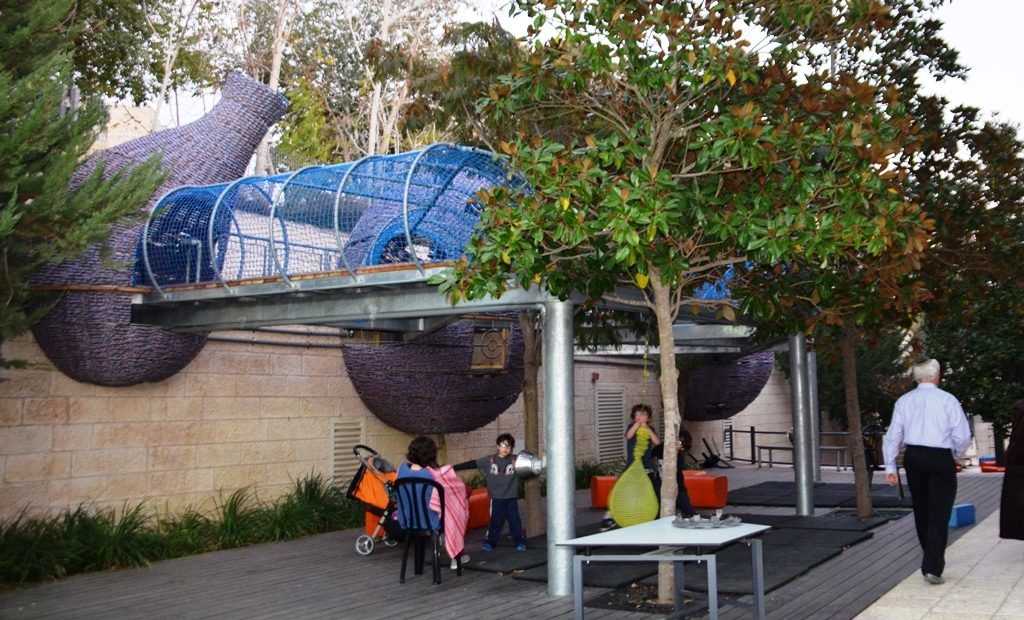
Play areas outside change regularly and are designed to teach basic scientific principles.
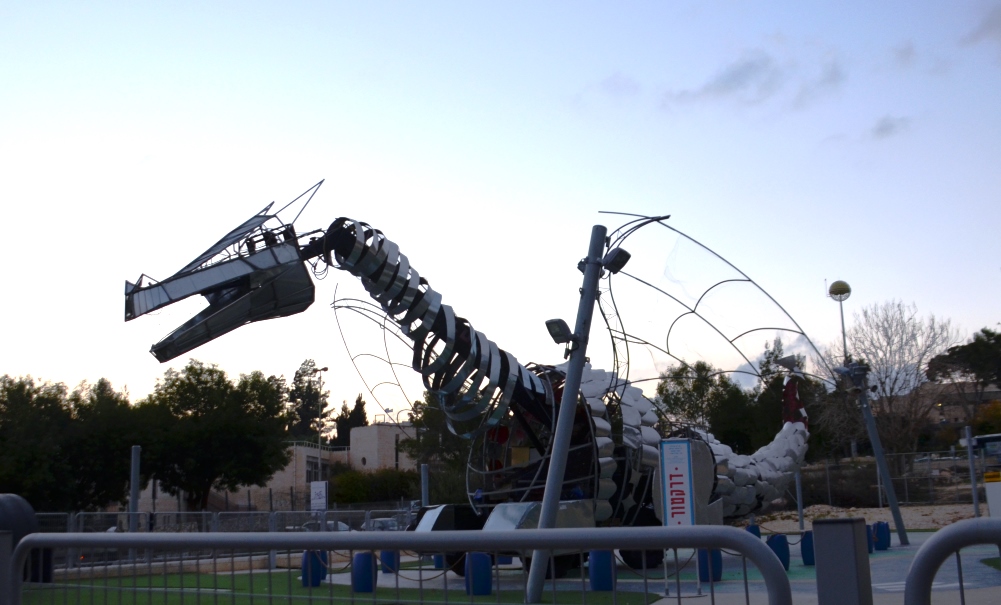
This new age dinosaur can be found on the grounds outside.
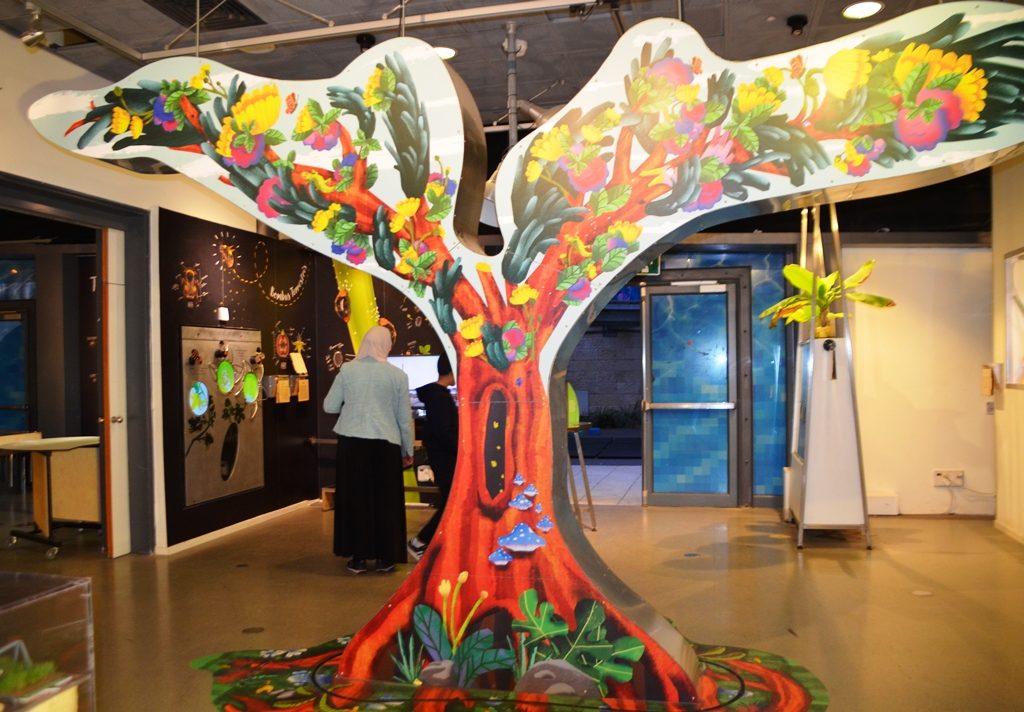
I do not think this is the tree of knowledge.
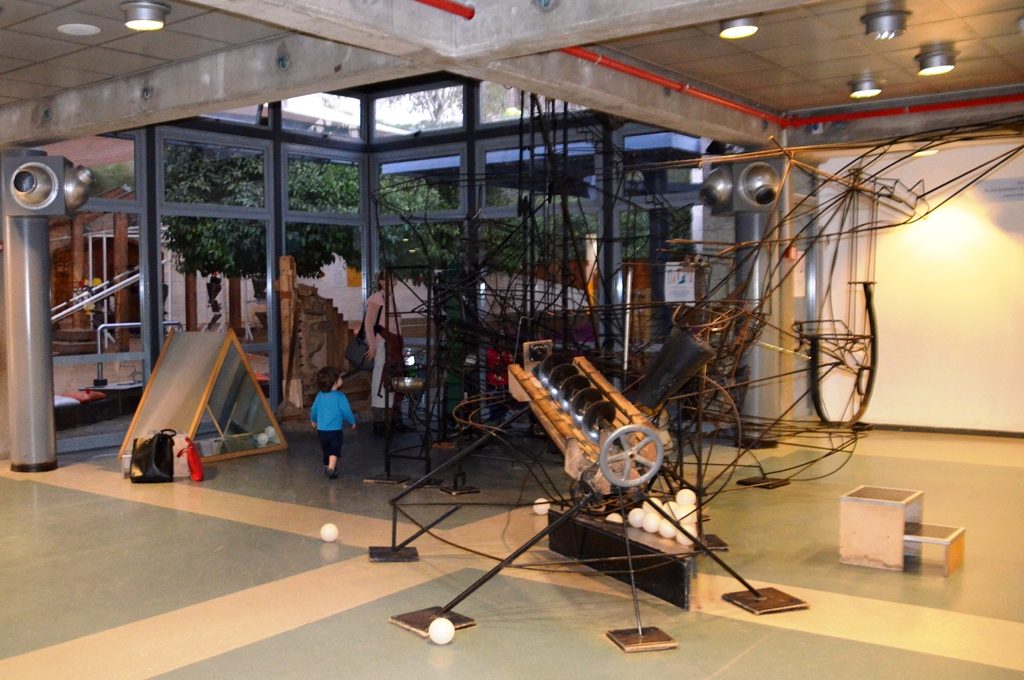
But there is no better place to start for toddlers to explore and learn.
These museums, located near each other, have places to eat, and provide more than shelter.
But I must repeat my warning, if you are supervising young children,
do NOT try and do any of the amazing Jerusalem museums if you are a tired adult.
Another piece of advice: check museum hours before going, as they vary day by day.
If you do not have membership, there are days free for children, but costs vary and can be expensive.

However, in honor of Space Week, the Bloomfield Science Museum is offering free entrance.
Even if Jerusalem is warm and the sun is shining, worth checking out.
Enjoy!